|
Organizations and Progressive Activities
of the Republic of Vietnam Navy
by Commander Thong Ba Le
PROLOGUE
The Vietnamese people fought the war against the French Colonists for over a century, during which hundreds of thousands of young nationalists sacrificed their lives to liberate our homeland. We have all spent time mourning our beloved friends or relatives who died in the cruel war that all but destroyed our underdeveloped country. Vietnam survived only because of her proud and patriotic people.
This document described and illustrated the Organizations and progress of the Republic of Vietnamís Navy from the beginning in 1952 to 1974. The report included the naval battle at Paracels Island in January 19,1974 between the heroic Republic of Vietnamís Navy ships and the aggressive Red Chinese vessels. With the pride of a warrior in a Navy that gloriously defended its maritime border from the northern to the southern edges of the East Sea, the author wishes to participate somewhat in the history of the courageous people of Vietnam.
1. Background history
The Vietnamese Navy was founded in 1952 with the Turn Over program from the French Navy, until August 20, 1955, the date that Vietnamese Naval Officers completely commanded the Navy Forces. There were about 2000 personnel from the beginning, with 22 vessels consisting of: Patrol Coastal Escort (PCE), Landing Ship, Mechanized (LSM), Landing Ship Infantry, Large (LSIL), Landing Ship Support, Large (LSSL), Mine Sweeper (YMS) and six River Assault Groups. The Navy then was formed into two main Combat Forces: Sea Forces and River Forces. In 1959, North Vietnamese Communists started developing a movement to sneak troops and equipment into the Republic of Vietnamís territory. In order to stop the Communists from using the East Sea to sneak troops and weapons by boats to the coastline of South Vietnam, the RVNís Navy, along with the mentioned ships, organized a Luc Luong Hai Thuyen (Coastal Junk Force) with 200 boats. These motor propelled and sail junk boats, manned by Regional Irregular Forces personnel and local fishermen recruited for the occasion, kept watch along the 1,200 mile coastline. The name Coastal Junk Force was later changed to Regular Forces and came to be known as Duyen doan (Coastal Groups) and was under the command of the Coastal Zones. While organizing the Coastal Junk Force, the Sea Force was also modernized and developed with the receiving of warships that were transferred from the United States Navy. The period between 1959 and 1966 was noted for the considerable advance of the RVN Navy in every field involved: the operations activities, the training facilities and the logistics capability. These fields had developed and improved as well as the overall organization and management of the Navy. The total number of gunboats, warships and junk boats increased from 94 units to 560 vessels and the number of personnel grew to 16,000 from 3,000 in 7 years. In addition, from October 1966, Luc Luong Lien doan Tuan Giang (The River Patrol Groups), previously under the command of Dia Phuong Quan (The Regional Irregular Forces), were included in the Command and the Organization of the Republic of Vietnam Navy.
 In 1968, in order to quickly improve the role of the RVN Armed Forces in fighting against the aggression of North Vietnamese Communists, the RVN Navy and the U.S. Navy carried out plans to turns over all assets of the U.S. Navy to the RVN Navy in a program named "Accelerated Turn Over to Vietnam" (ACTOV). This plan was executed swiftly and effectively and was accomplished before schedule. As a result, at the end of 1972, the number of warships, gunboats and junk boats had reached a total of 1,500 vessels and more than 40,000 officers, non-commissioned officers and enlisted men. There were 16 Radar Surveillance Sites and 16 Naval Support Bases and Operational Support Units. The Vietnamese Navy Headquarters was organized into three main components: In 1968, in order to quickly improve the role of the RVN Armed Forces in fighting against the aggression of North Vietnamese Communists, the RVN Navy and the U.S. Navy carried out plans to turns over all assets of the U.S. Navy to the RVN Navy in a program named "Accelerated Turn Over to Vietnam" (ACTOV). This plan was executed swiftly and effectively and was accomplished before schedule. As a result, at the end of 1972, the number of warships, gunboats and junk boats had reached a total of 1,500 vessels and more than 40,000 officers, non-commissioned officers and enlisted men. There were 16 Radar Surveillance Sites and 16 Naval Support Bases and Operational Support Units. The Vietnamese Navy Headquarters was organized into three main components:
The Combat Forces
The Logistics Branch
The Training Element
2. The Navy Headquarters Organization
The Vietnamese Navy Headquarters was the brain of the Republic of Vietnam Navy. It was responsible for the operation, management and development of the Navy and was divided into 8 prominent branches as follows:  The Operations Branch
The Logistics Branch
The Personnel Branch
The Psychological Branch
The Training Branch
The Medical Branch
The Navy Security Branch and
The General Inspection Office
The Operations Branch
The Logistics Branch
The Personnel Branch
The Psychological Branch
The Training Branch
The Medical Branch
The Navy Security Branch and
The General Inspection Office
3. The Combat Forces
The Combat Forces were important elements of the Navy that consisted of seven Zone Navy Headquarters and 9 different Forces as listed:
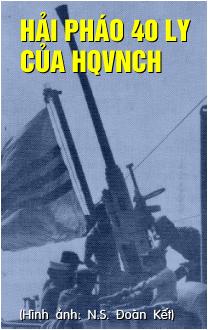
- 5 Coastal Zones
- 2 Riverine Zones
- The Nation Capitol Special Zone
- The Rung Sat Special Zone
- The River Patrol Group
- The Navy Fleet
- The Amphibious Force
- The Patrol Boat River Force
- The Special Task Force
- The Marine Corps
- The Coastal Security Service
3.1 The 5 Coastal Zones
In order to coordinate operations of the territorial and tactical organizations, there were 5 Coastal Zones established and named as First Coastal Zone, Second Coastal Zone and so on. Their primary responsibilities were to maintain the Seaboard and Coastal security including the island territory. Their other missions were to stop and prevent the enemyís illegal infiltration by sea and to conduct operations of their naval units to support and reinforce the appropriate Army Tactical Corp. The main units of the Coastal Zones were Duyen doan (the Coastal Groups), Hai doi Duyen phong (the Coastal Patrol Maritime Groups), Dai Kiem Bao (Radar Surveillance Sites) and Can Cu Hai Quan (Naval Bases) located in their territories. Along the coast of the Republic of Vietnam, there were 20 Coastal Groups and 16 Radar Surveillance Sites; each Coastal Group was equipped with 12 motor-propelled junk boats of various types:
- Yabuta junk boat
- Ferrous Cement junk boat
- Kien Giang
junk boat
Each Coastal Patrol Maritime Group was manned with gunboats including Patrol Craft, Fast (PCF), "Swift" and WPB (former U.S. Coast Guard 82ft-patrol boat).
3.2 The Riverine Zone
There were two Riverine Zones in the RVN Navy:
- The Third Riverine Zone operated in the rivers and water ways of the Army Third Corpsí territory
- The Fourth Riverine Zone operated in the rivers and waterways of the Army Fourth Corpsí territory.
 Their primary responsibilities were to maintain and secure the safety on the rivers, to prevent and stop the enemyís troops and equipment from coming either through or into their operating areas, to provide support in combined operations and also to assist the Local Pacification and Developing Program. Besides the Naval Bases, the other main units of the Riverine Forces were The River Assault Groups which were equipped with old gunboats left by the French Navy including: Monitor, LCVP, LCM Commandment, STCAN FOM÷ Their primary responsibilities were to maintain and secure the safety on the rivers, to prevent and stop the enemyís troops and equipment from coming either through or into their operating areas, to provide support in combined operations and also to assist the Local Pacification and Developing Program. Besides the Naval Bases, the other main units of the Riverine Forces were The River Assault Groups which were equipped with old gunboats left by the French Navy including: Monitor, LCVP, LCM Commandment, STCAN FOM÷
3.3 The National Capitol Special Zone
The Naval Force that operated in the rivers surrounding the Nation Capitol Special Zone was responsible for security. It provided protection for the Capitol as well as coordinated the operations of all naval units in Saigon and its surrounding areas and provided administrative support to the Navy Headquarters.
3.4 The Rung Sat Special Zone
The Vietnamese Navy was designated to be responsible for securing the traffic on the strategic and vital rivers that connected Saigon and the East Sea, the were Long Tao River and Soai Rap River. The Rung Sat Special Zone was covered with jungle of water plants that created ideal areas for VC guerrilla warfare; therefore it was difficult to protect and provide the safety to the thousands of merchant ships steaming in and out through these rivers. But the Navy Forces in charge of this task did a great job of securing the shipsí safety without incident in recent years.
3.5 The River Patrol Group
The River Patrol Group, previously under the Command of the Regional Irregular Forces, was later assimilated into the Navy and consisted of 24 River Patrol Companies, 3 repair and maintenance Companies and a Training Center in Cat Lai. The companies were organized to provide operations support to their designated districts and secure the safety on rivers and waterways. They were manned with LCM-3 landing crafts and Harbor Patrol boats.
3.6 The Navy Fleet
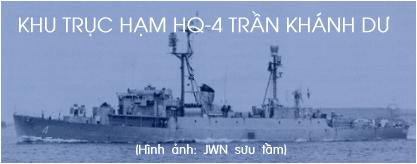 The Vietnamese Fleet was the main force of the Navy, consisting of warships with capabilities to operate in the open sea. The Vietnamese Fleet was divided into three Task Groups: Task Group I, Task Group II and Task Group III. The Vietnamese Fleet was the main force of the Navy, consisting of warships with capabilities to operate in the open sea. The Vietnamese Fleet was divided into three Task Groups: Task Group I, Task Group II and Task Group III.
Task Group I: All ships of Task Group I carried out the responsibility of patrolling in the Vietnamese territorial waters to stop the illegal infiltration of the enemy from the North and provided naval gunfire and support in combined operations with the friendly Forces. The Task Group I was manned with:
- 20 Patrol Gunboats (PGM)
- 03 Landing ships infantry (LSIL)
- 04 Landing ships support (LSSL)
Task Group II: This Task Group provided transportation, amphibious operations, supplies, repair and maintenance to gunboats and gunfire support in the operations areas. Task Group II also carried out Medical assistance and Civilian psychological and political warfare programs with its two Hospital ships that were equipped with X-ray facilities; dental care units, labs and clinics. These two Hospital ships frequently visited villages located along the coast and rivers in the Mekong Delta to help people who lived in the concentrated area and need medical assistance due to the lack of medicine and medical facilities in their areas. Task Group II consisted of:
- 06 Landing Ship Tank (LST)
- 05 Landing Ship Medium (LSM)
- 02 Hospital Ship (LSM-H)
- 06 Oil Tanker (YOG)
- 14 Landing Craft (LCU)
- 01 Supply Ship (AKL)
- 02 Support Ship (ARL)
- 01 Repair Ship (AGP)
Task Group III: This Task Group patrolled in the open sea to discover and immediately stop the infiltration of the enemy and coordinated in combined operations and provided naval fire support to friendly forces. Task Group III was manned with:
- 02 Destroyer (DER)
- 07 Frigate (WHEC)
- 08 Patrol vessels - Escort (PCE)
3.7 The Amphibious Force
The Amphibious Force was formed in June 1969 to replace the U.S. Task Force 117. This Task Force operated in Mekong Delta and consisted the following units:
Command and Control Boat (CCB)
- Assault Support Patrol Boat (ASPB)
- Landing Craft-Monitor (LCM converted)
- Armored Troop Carrier (ATC)÷
3.8 The River Patrol Force
The River Patrol Force was founded in October 1969 and consisted of 14 River Patrol Groups, divided into 6 River Patrol Task Groups. Their primary responsibility was to patrol, to secure the safety of the rivers and to stop and prevent the infiltration of the VC through the Task Forceís responsible areas from the border of Cambodia and Vietnam. Each River Patrol Group was manned with Patrol Fast Boats (PBR), which had very high speeds and the capability to go into narrow creeks and shallow waters and were very easy to maneuver.
3.9 The Special Mission Force
With the concept of using a variety of units to operate in a combined territory to carry out special missions, the Task Group was manned with the following groups:
- 07 Riverine Attack Group
- 02 Minesweeping Group
3.10 The Marines Corps
The Republic of Vietnam Marines Corps had been organized into Divisions, and although they were in the Organization of the Navy, they were still placed as part of the Reserved Forces of the General Headquarters of Vietnamese Arms Forces.
3.11 The Coastal Security Service
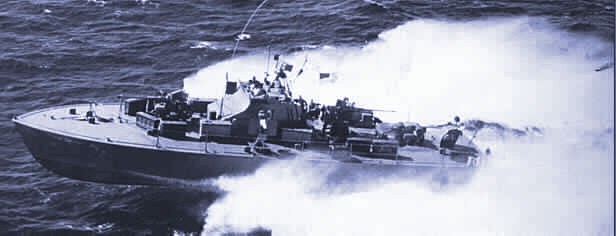 The Coastal Security Service was an organization of the Navy that was placed under the operational command of Nha Ky Thuat (The Strategic Technical Directorate or STD) to carry out special maritime missions along the coastline of Vietnam. The Coastal Security Service was an organization of the Navy that was placed under the operational command of Nha Ky Thuat (The Strategic Technical Directorate or STD) to carry out special maritime missions along the coastline of Vietnam.
4. Operational Command and Control
To be more effective in conducting naval operations, the Navy Combat Units were placed under the Operational Command and Control of The Tactical Mobile Riverine Headquarters and the Tactical Mobile Sea Headquarters.
4.1 The Tactical Mobile Riverine Headquarters
The headquarters commanded and controlled the operations in rivers located in the territories of The Army III Corps, The Army IV Corps and The Nation Capitol Special Zone to stop and prevent the enemyís sneaking of troops and supplies and to secure the safety of the waterways and to support the Army Divisions in operations Tran Hung Dao 36,41,43,44.
4.2 The Tactical Mobile Sea Headquarters
In order to effectively maintain control over the entire Republic of Vietnam territorial waters, the Tactical Mobile Sea Headquarters was established to command and to control maritime operations Tran Hung Dao along the coastline and to stop and prevent the infiltration of the North Vietnamese Communists by boats. The Organization also provided naval gunfire support to friendly forces in the responsible operational areas and to assist in the Pacification programs of the Government. There were 5 Sea Operations Zones and each zone was controlled by a Task Force and manned with about 100 ships, gunboats and junk boats. The Sea Operations Zone consisted of three tactical areas:
- The area between the coast to 12 miles was assigned to junk boats, Patrol Craft, Fast- Swift boats (PCF), Patrol Gunboats (PGM) to maintain patrolling.
- The area between 12 miles to 53 miles was designated to and patrolled by Destroyers, Frigates and Patrol and Escort Ships (PCE).
- The area between 53 miles to 100 miles from shore was responsible of the surveillance of the long range airplanes of the VN Air Force that were flying out from inland to patrol in this tactical area.
5. Logistics
The Logistics Command Headquarters supported the logistics and supplies to the Naval operational units. The following facilities were placed under the management of the Logistics Command:
- The Navy Shipyard, The Supply Center, The Facility and Utility Center and The Electronics Repair Center
- 07 Naval Support Bases that located in Danang, Cam Ranh Bay, Cat Lo, Nha Be, An Thoi, Dong Tam and Binh Thuy.
6. Training
There were 3 Training Centers in the Vietnamese Navy; they were located at Nha Trang, Cam Ranh Bay and Saigon:
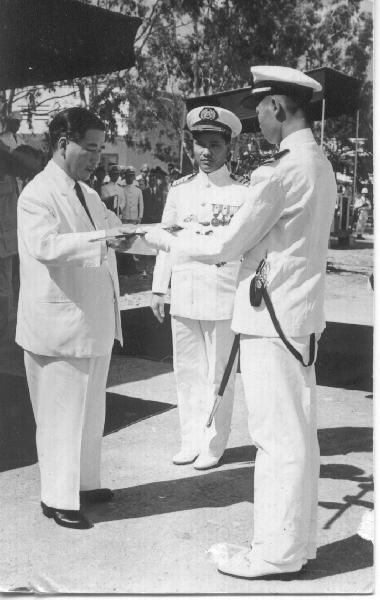
- The Nha Trang Naval Training Center: With the capability to train from 1,200 to 1,500 personnel included the Naval Officer School, the Advanced Specialty School and the Specialty School.
- The Cam Ranh Naval Training Center: With the capability to train from 1,500 to 1,800 personnel including The Fleet School, The Damage Control School, the Specialty School and the Basic School.
- The Saigon Naval Training Center: With the capability to train 200 students for the Command and Staff School, the Non-Commissioned Warrant Officer School, the Specialty School and other short term training classes.
There was also the Cat Lai Training Center of the River Patrol Group that was used to train Non-Commissioned Officers, Specialty Programs and Supply School.
- The Results:
From November 1966 to January 1973, the Republic of Vietnam Navy successfully achieved the following victories in combat:
- 2219 North Vietnamese Communists were killed
- 1277 North Vietnamese Communists were captured
- 6798 Detained
- 509 VC returned in Open Arms Program
Weapons captured: 382 big guns and 2851 individual weapons. The RVN Navy also sank and captured 467 VC junk boats and destroyed 14 North Vietnamese ships that infiltrated to the South Vietnam on the following places and dates:
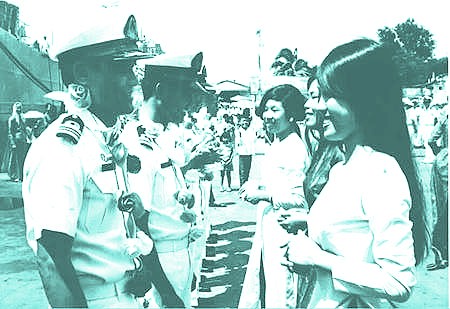
- Vung Ro in 02-19-1965
- Cua Tieu in 01-08-1966
- Bo De in 05-10-1966
- Ba Dong in 06-20-1966
- Bo De in 01-01-1967
- Batangan in 03-14-1967
- Sa Ky in 07-15-1967
- Duc Pho in 03-01-1968
- Hon Heo in 03-01-1968
- Cua Viet in 03-01-1968
- Bo De in 03-01-1968
- Cung Hau in 11-22-1970
- Ganh Hao in 04-12-1971
- Phu Quoc in 04-24-1972
The Communists violated the Cease Fire Agreement: In February, 1973 the Cease Fire Agreement, signed by the North Vietnam Communists on January 27, 1973 in Paris to reestablish peace for Vietnam, was violated by the Communists. They attacked units of the RVN Arms Forces and Naval vessels. The 827 violations to the Navy included 575 attacks, 155 bombardments and 97 mine traps. In order to defend themselves, Naval units killed 63 North Vietnam Communists, captured 16 VC and 57 individual rifles and destroyed hundreds of mines and grenades÷
The Naval Battle of Paracels Island: On January 19, 1974, the Republic of Vietnam Navy ships courageously fought against the aggression of the Chinese Communists who tried to occupy the Paracels Island by force. The valiant and heroic action of the Officers and Enlisted men of the RVN Navy showed the spirit of our Navyís Founder Tran Hung Dao and the patriotic quest of Vietnamese people.
Commander Thong Ba Le, VN Navy
 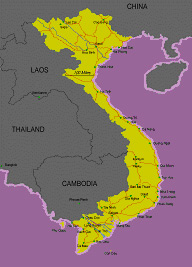
Vietnam War in my Poetry
Back to Homepage
| 
